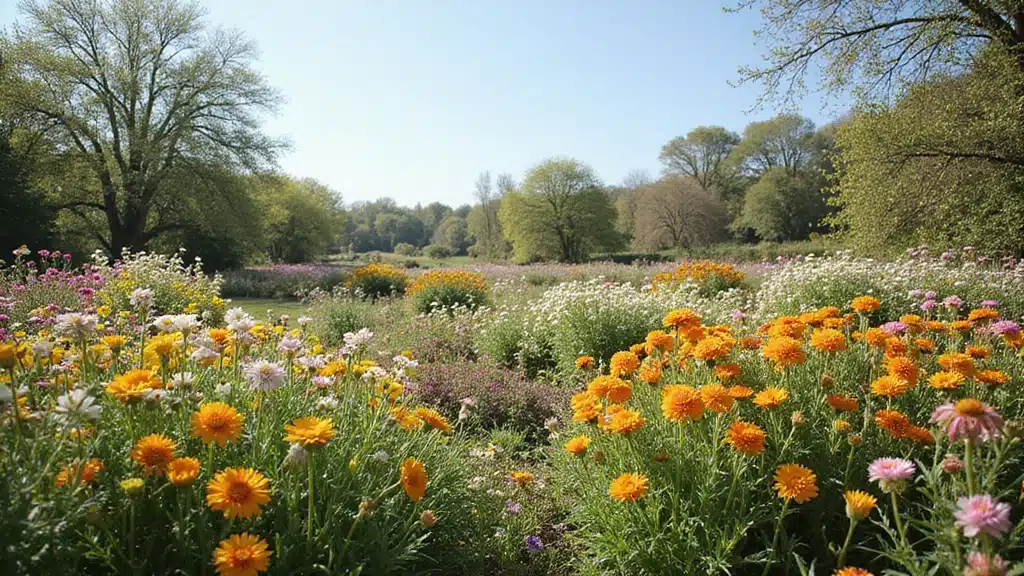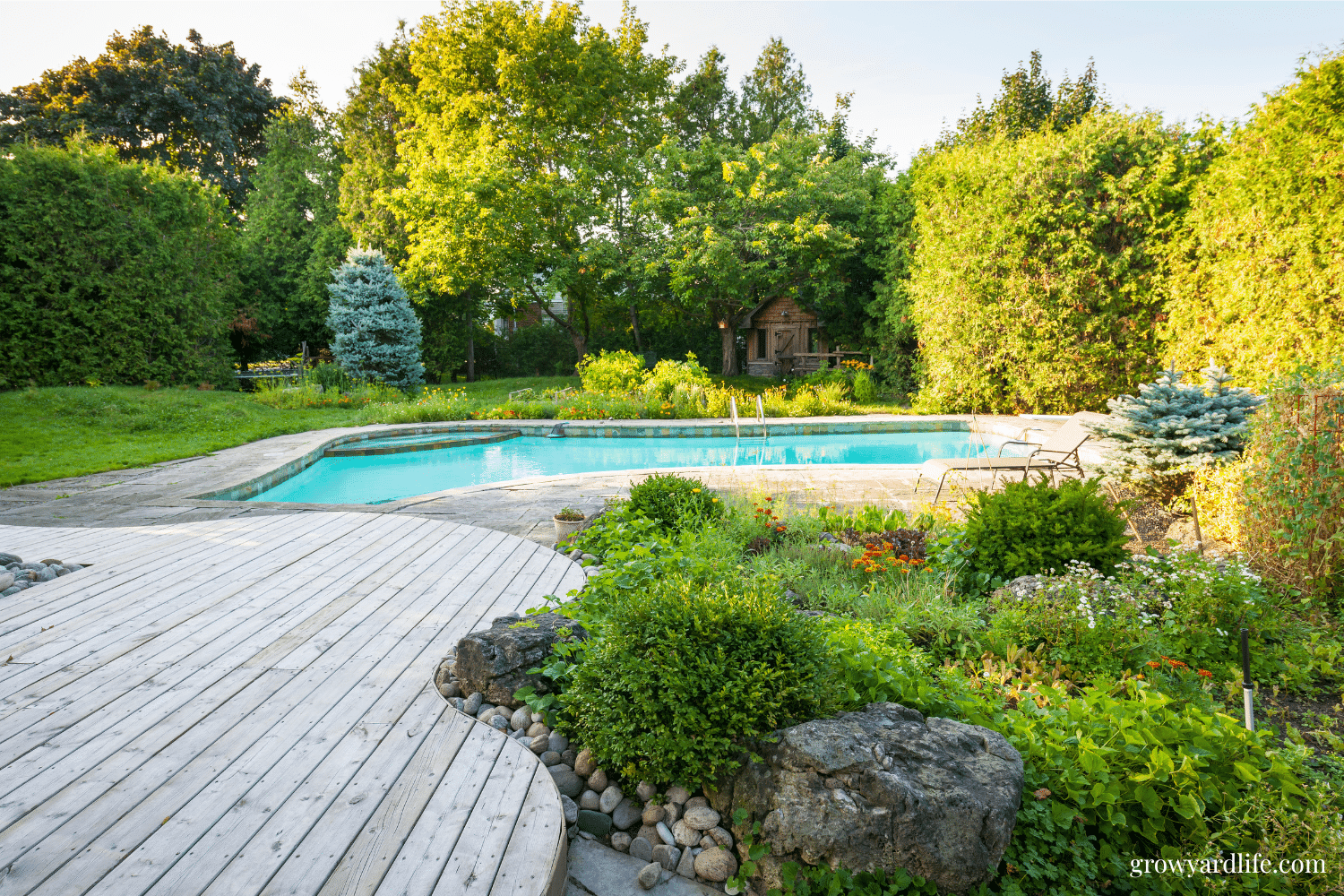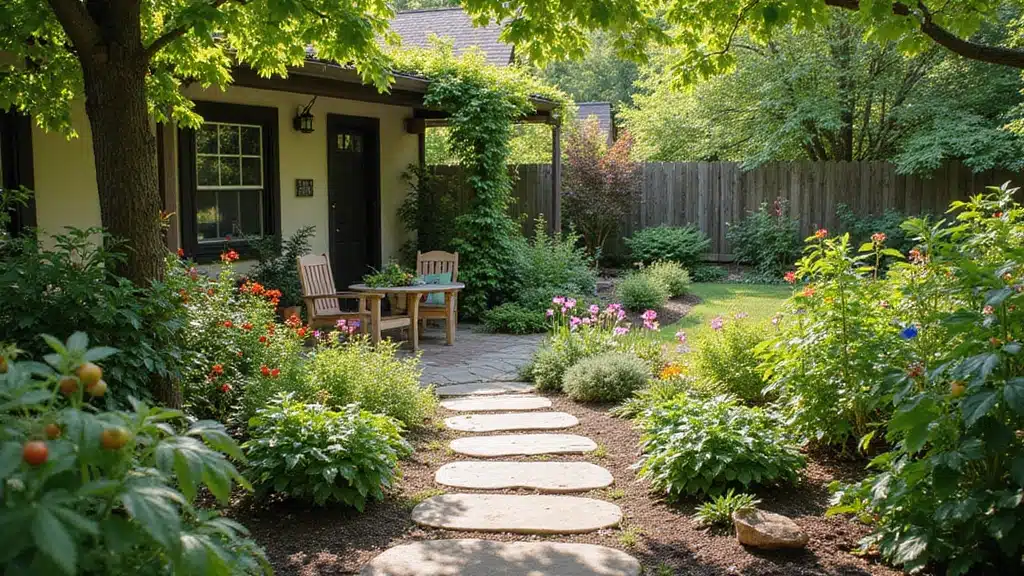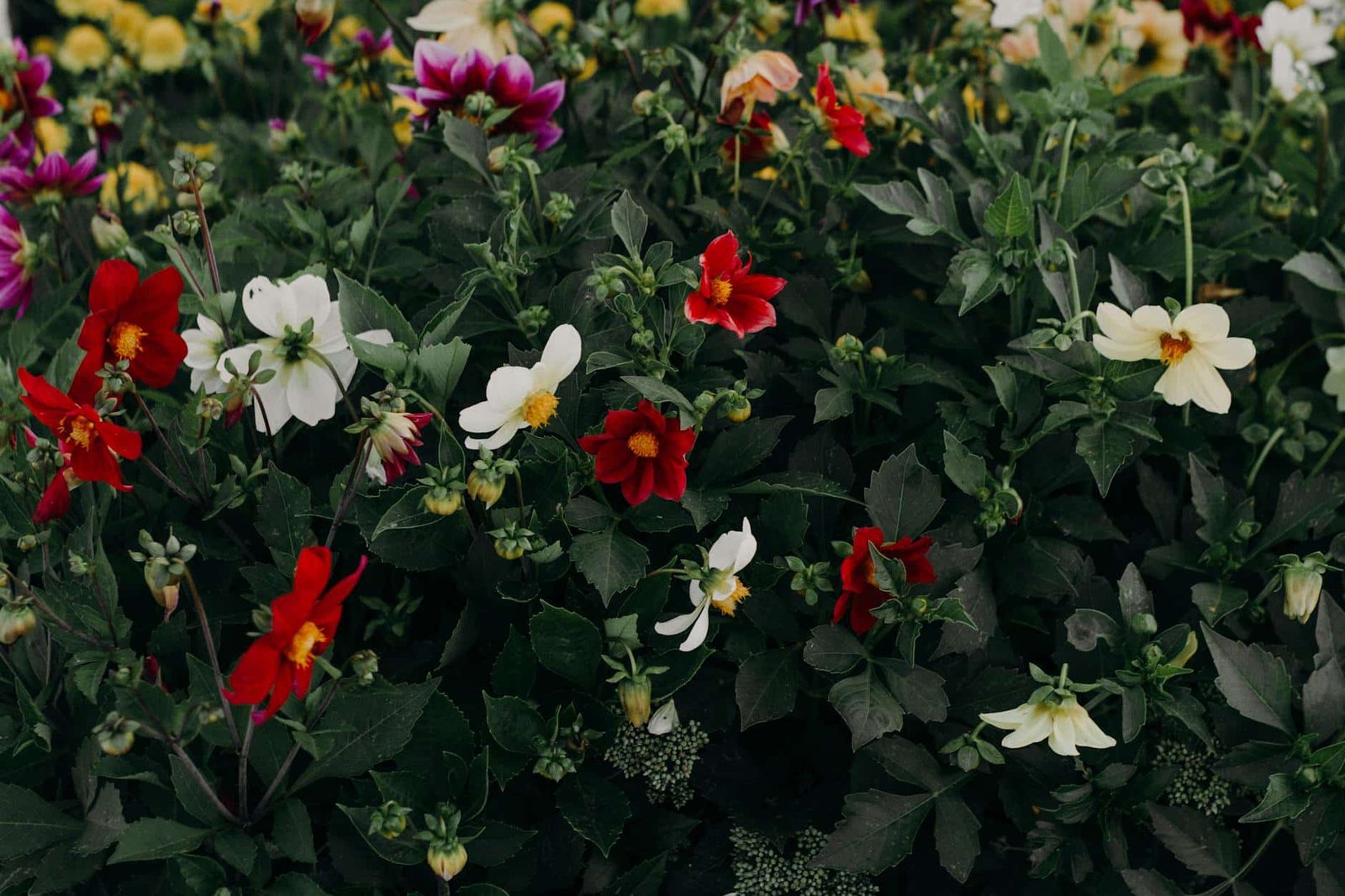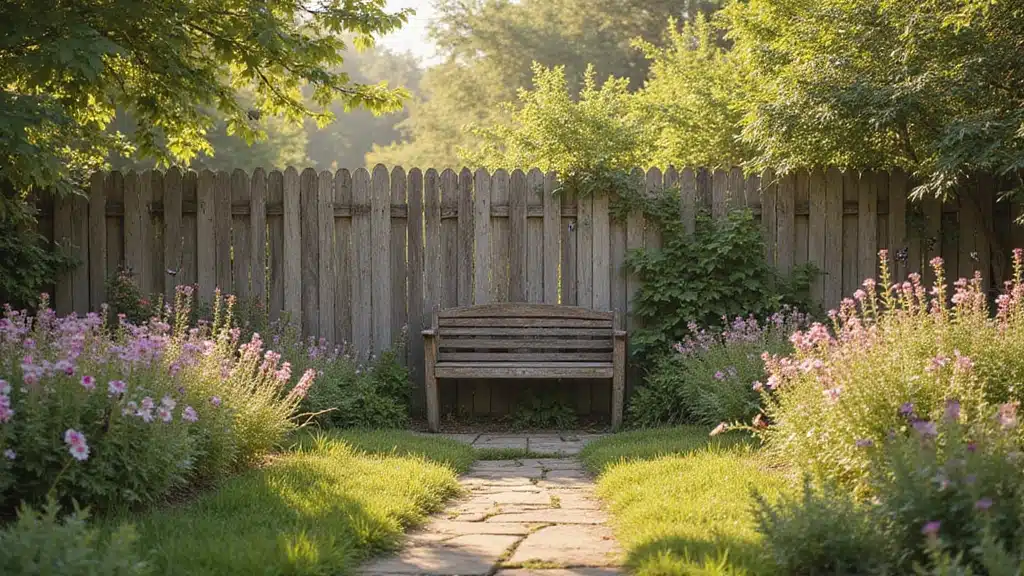Gardening can be an enchanting journey, especially when it comes to seasonal flowers.
These vibrant blooms are not just a pleasure for the eyes; they bring life to your space, turning any garden into a magical retreat.
With a sprinkle of creativity and these exclusive tips, you can transform your garden into a floral paradise that thrives all year round.
Let’s dive into the secrets of planting seasonal flowers that will have your garden bursting with color and joy!
1. Choose the Right Seasonal Flowers
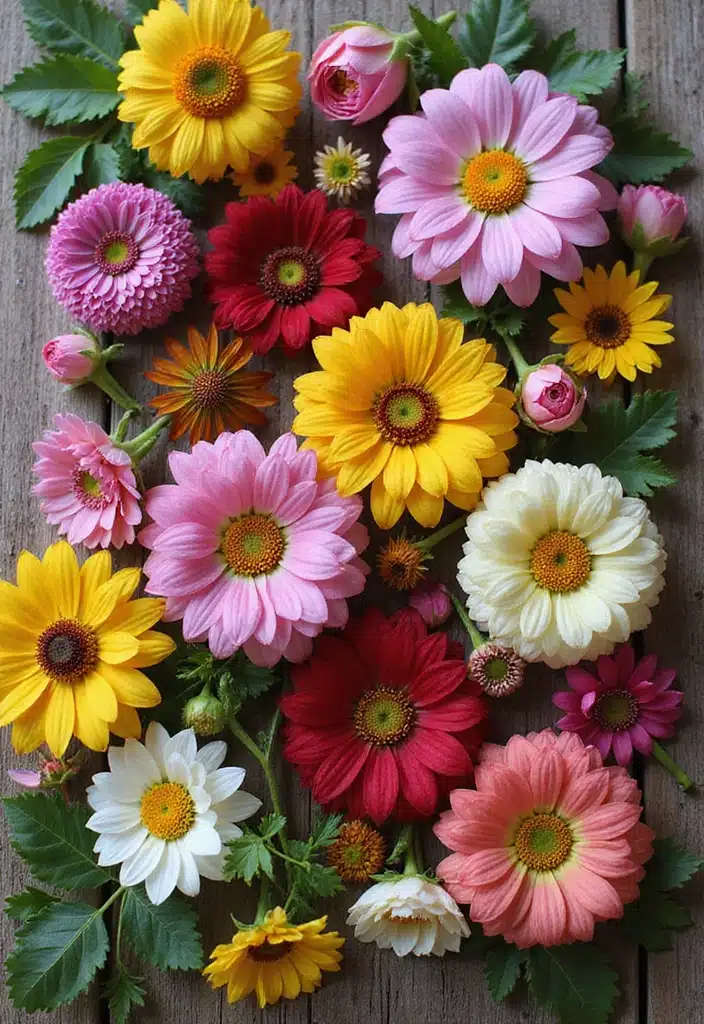
Selecting the right seasonal flowers is the foundation of a flourishing garden.
Understanding the seasons helps you pick plants that will thrive during specific times of the year. For spring, consider planting tulips, daffodils, or hyacinths. In summer, sunflowers, zinnias, and marigolds steal the show, while chrysanthemums and pansies showcase their beauty in fall. Winter gardens can be brightened with hellebores and winter jasmine.
Here’s a handy list of flowers to consider:
– Spring: Tulips, Daffodils, Hyacinths
– Summer: Sunflowers, Zinnias, Marigolds
– Fall: Chrysanthemums, Pansies
– Winter: Hellebores, Winter Jasmine
Remember to think about the climate in your area, as this greatly impacts growth. Local gardening groups or nurseries can offer invaluable advice about what thrives best in your region. By matching flowers with the right season and climate, you ensure your garden is a year-round display of stunning colors.
2. Timing is Everything
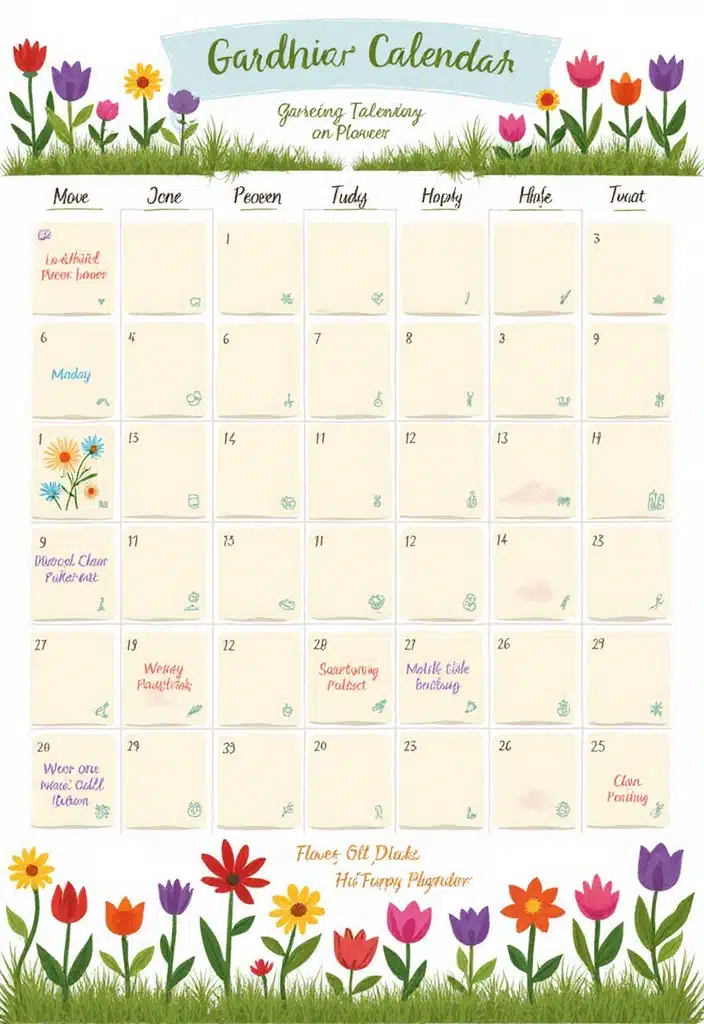
Timing when to plant seasonal flowers can make or break your garden. Each flower has its own planting schedule; some prefer to be sown indoors before being moved outside, while others thrive directly in garden beds. For instance, start your spring flowers indoors 6-8 weeks before the last frost date. Summer blooms can usually be planted after the risk of frost is gone, while fall flowers should be put in the ground before the first frost hits.
Watching the weather is essential, as a sudden cold snap can ruin delicate seedlings. To help keep track of important planting dates and frost dates, consider using a frost date tracker, which can serve as a handy garden calendar to monitor conditions and ensure your flowers get off to a great start.
Additionally, if you want to ensure healthy growth for your plants, investing in a seed starting kit can be incredibly beneficial. This kit will help you successfully start your flowers indoors, giving them the best chance to thrive once they are transplanted outside. Proper timing combined with the right tools means lush blooms instead of sad little wilting plants.
3. Soil Health: The Unsung Hero
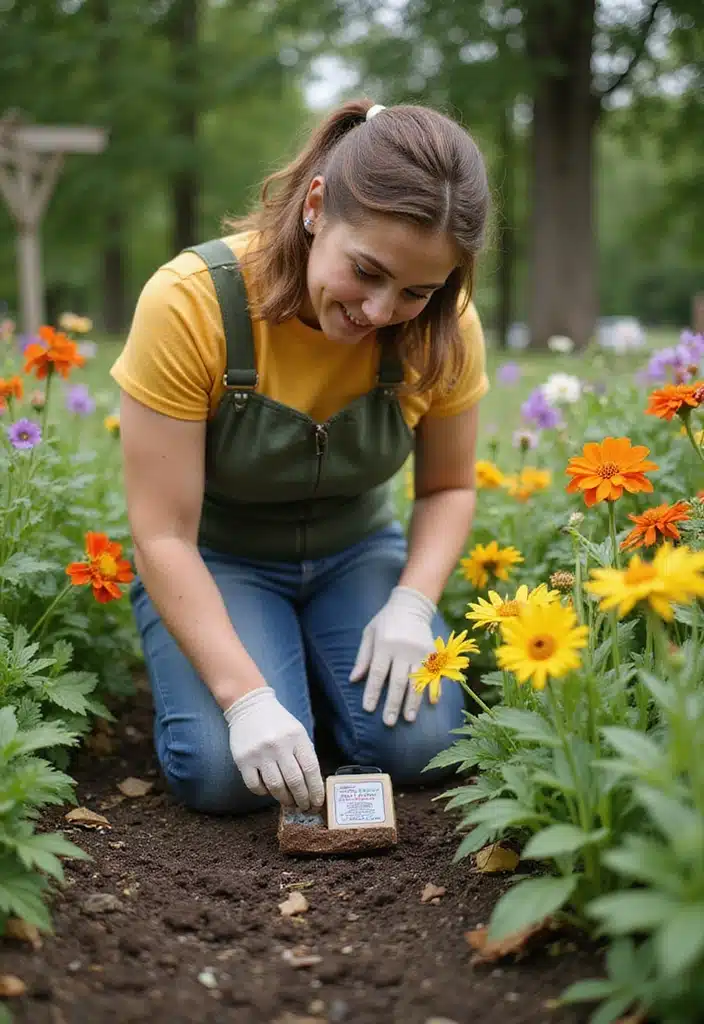
Soil health is often overlooked, but it plays a critical role in the success of your seasonal flowers. Rich, nutrient-dense soil leads to strong, vibrant plants. Start with a soil test to determine pH levels and nutrient needs using a soil test kit, which quickly and accurately measures your soil’s acidity and nutrient content. Once you have your results, amend your soil with compost or well-rotted manure to boost fertility. A great option is the organic compost, which is odor-free and naturally moist, perfect for enhancing your garden’s health.
Additionally, adding mulch helps retain moisture and suppress weeds, creating an ideal environment for your flowers. Consider using organic mulch, which provides high carbon content and excellent water retention, benefiting your garden both indoors and outdoors.
Here are some tips to enhance your soil:
– Test soil pH regularly
– Integrate compost or well-rotted manure
– Use organic mulches to conserve moisture
– Rotate flower beds each season to prevent disease
Healthy soil translates to healthier, happier flowers, leading to a more stunning garden display.
4. Companion Planting Magic
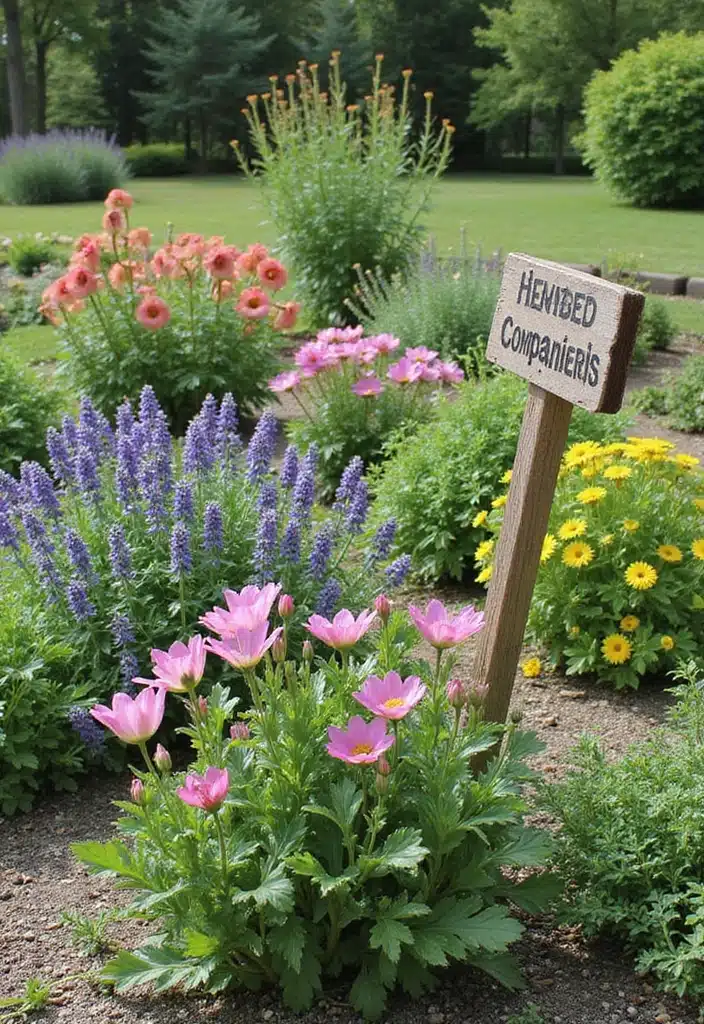
Companion planting is a game-changer when it comes to seasonal flowers. Certain plants naturally benefit each other when planted together. For instance, marigolds can deter pests, making them perfect companions for vulnerable flowers like roses. To further enhance your garden’s resilience against pests, consider using Mighty Mint Gallon Insect and Pest Control Peppermint Oil. This natural spray helps keep unwanted pests at bay, ensuring your flowers flourish without the threat of infestations.
Additionally, pairing flowers with herbs can enhance growth while also making your garden a fragrant haven. To support this growth, using a quality fertilizer like Espoma Organic Flower-Tone, an organic fertilizer specifically designed for flowers, can be immensely beneficial. It boosts the vibrant blooms of annuals and perennials, allowing your garden to thrive.
Here’s a quick guide to pairs that work well:
– Marigolds with roses
– Nasturtiums with cucumbers
– Lavender with alliums
– Sunflowers with squash
To help you navigate companion planting, the Clyde’s Garden Planner can serve as a useful resource. This guide book offers a simple way to determine which plants will best complement each other.
Be observant of how your flowers react in their companions; some combinations are particularly harmonious, creating a vibrant, healthy garden that flourishes together. With the right plants and products, you can create a thriving garden that blooms like never before!
5. Water Wisely
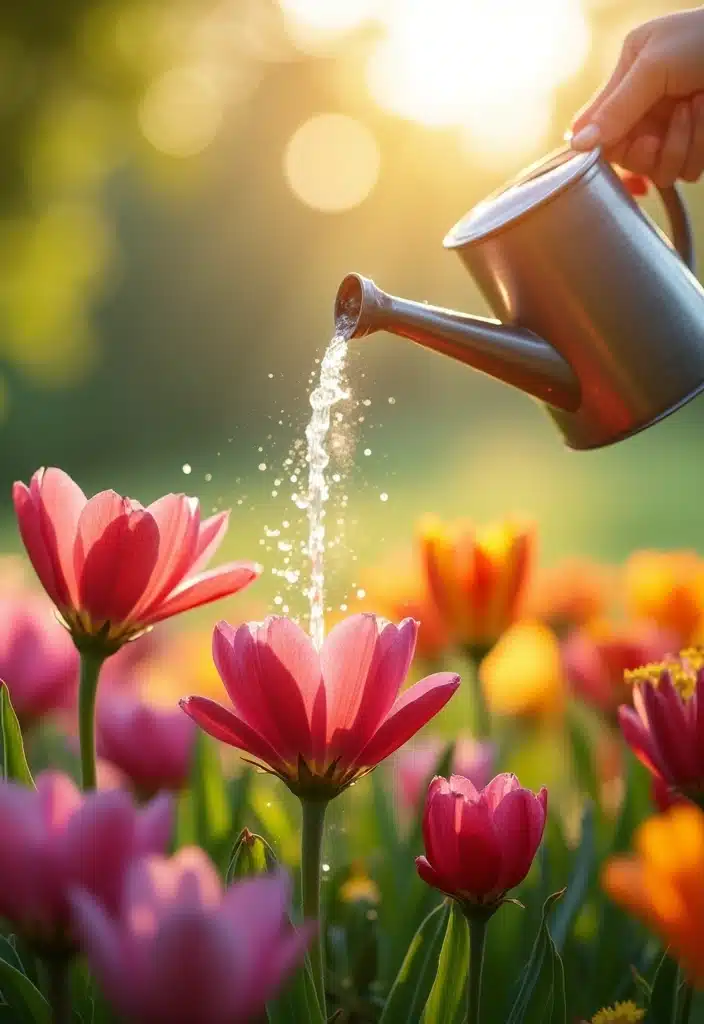
Watering might seem simple, but doing it wisely can transform your seasonal flowers into a breathtaking display. Too much water can drown roots, while too little can cause them to wither. It’s best to water your flowers deeply and less frequently, encouraging strong root growth. Early morning is the ideal time to water, as it allows moisture to soak in before the heat of the day.
To help you manage your watering effectively, consider using a soaker hose. This flat 100ft soaker hose offers a heavy-duty double-layer design that helps to deliver water directly to the roots while saving up to 80% water compared to traditional methods. It’s a great way to ensure your flowers receive deep and consistent moisture.
Applying mulch, such as GardenStraw, can significantly reduce evaporation and keep the soil moist for longer periods. This all-natural mulch not only conserves water but also suppresses weeds, creating a vibrant environment for your plants.
Additionally, monitoring rainfall can help you adjust your watering schedule. An easy-to-read rain gauge is an excellent tool for this purpose. By knowing how much rain your garden has received, you can avoid overwatering or underwatering your flowers.
Keeping these tips in mind, along with these helpful products, will ensure your blooms remain vibrant and beautiful throughout the growing season.
6. Fertilizing Fundamentals
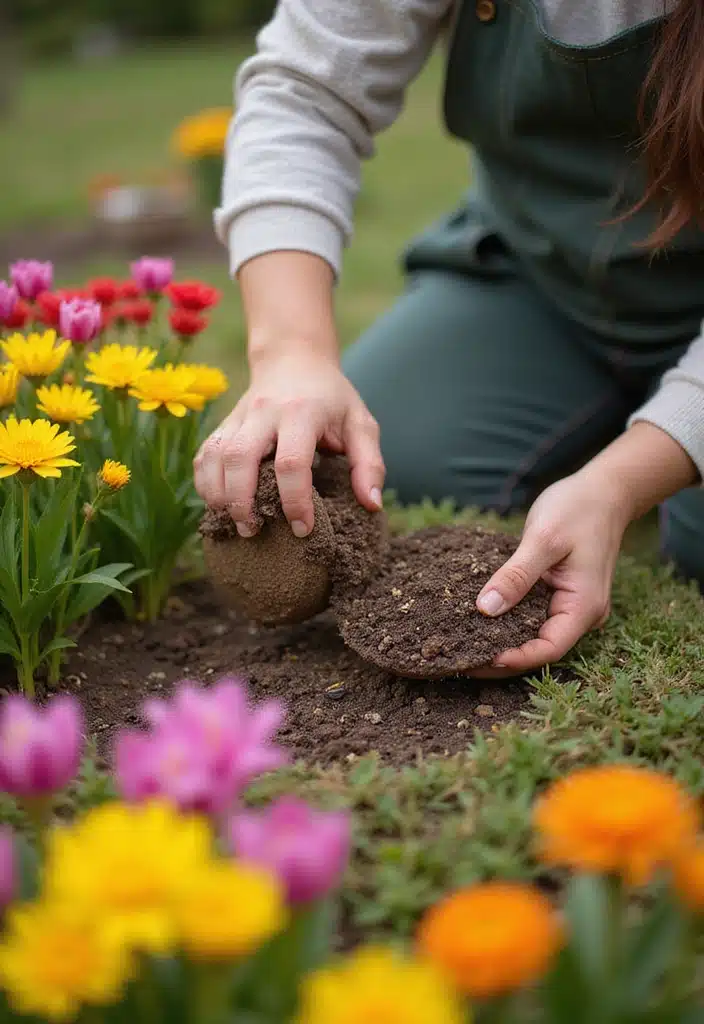
Fertilizing is an essential part of ensuring your seasonal flowers thrive. Knowing when to fertilize and what type to use is crucial for optimal growth. During the growing season, a balanced fertilizer, like Miracle-Gro Water Soluble All Purpose Plant Food, can provide the nutrients your plants need to flourish. This product is versatile and suitable for various plants, ensuring they get the right nourishment.
At the start of the season, apply a slow-release fertilizer such as 10-10-10 Plant Fertilizer Slow Release. This granular garden fertilizer will gradually feed your plants, promoting healthy root development and consistent growth. Following this, it’s beneficial to follow up with a liquid feed every few weeks for the best results.
Here’s a basic fertilizing schedule to maximize your garden’s potential:
– Pre-planting: Incorporate compost to enrich the soil.
– Early growth: Use a balanced fertilizer like Miracle-Gro for steady nourishment.
– During blooming: Switch to a high phosphorus fertilizer, such as Espoma TP6 Triple Phosphate Fertilizer, which will enhance flower production and vitality.
Remember to follow package instructions to avoid over-fertilizing, as this can harm your plants instead of helping them. By using these products appropriately, you’ll set the stage for a blooming garden like never before!
7. Pruning for Perfection
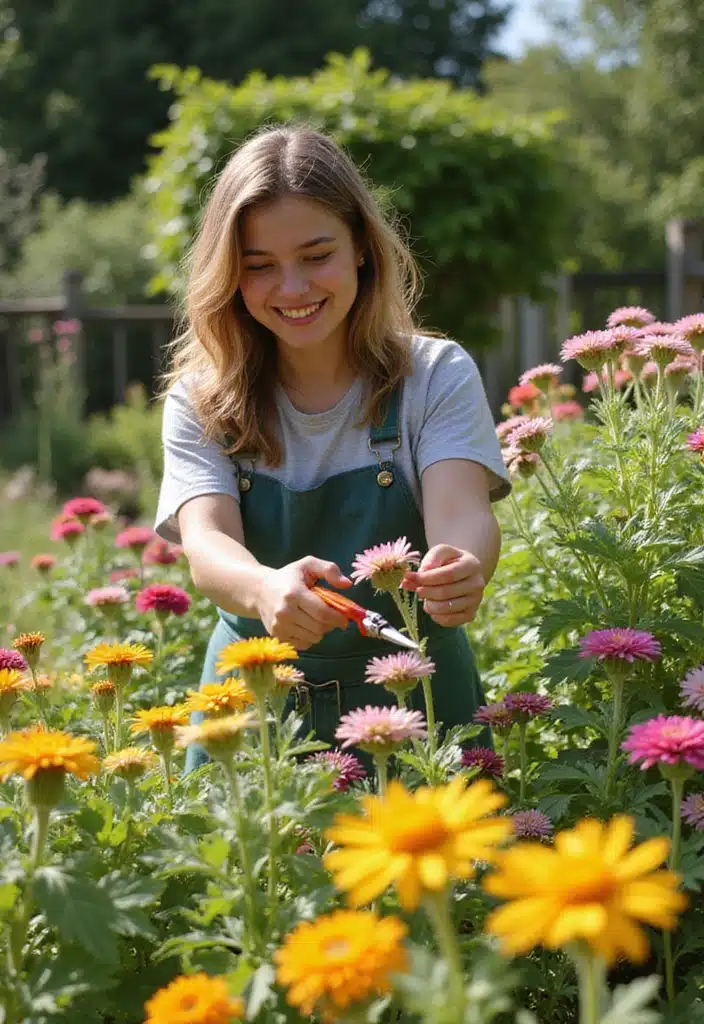
Pruning might sound intimidating, but it’s key to healthy seasonal flowers.
Regular pruning encourages bushier growth, more blooms, and overall plant health. Different flowers have different pruning needs; for instance, deadheading spent blooms helps some annuals flower longer. In contrast, perennials often benefit from a more substantial cut back in the fall or early spring.
Here are some pruning tips to keep in mind:
– Deadhead regularly to promote blooming
– Trim back when plants become leggy
– Remove diseased or damaged foliage
– Know the specific needs of your flowers
Embrace pruning, and you’ll enjoy a garden that not only looks good but is also thriving.
8. Attract Pollinators
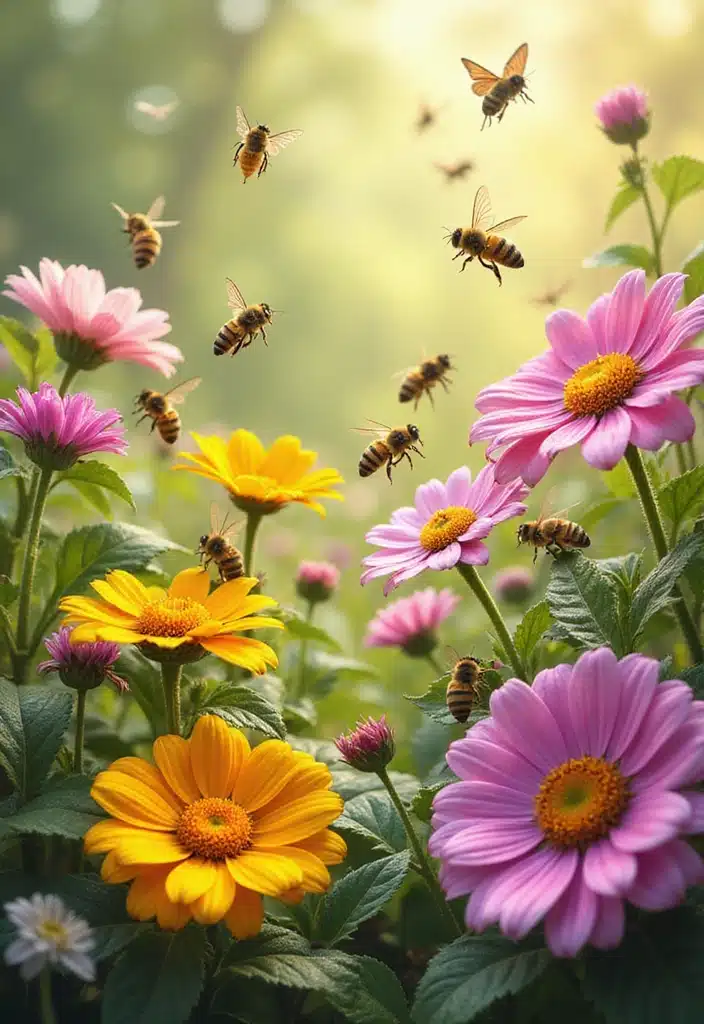
Pollinators are essential for the health of your seasonal flowers.
Creating a pollinator-friendly garden can boost the health and abundance of your blooms. Incorporate a variety of flowers with different blooming times to attract bees, butterflies, and hummingbirds throughout the seasons. Native plants are particularly effective since they provide the right food for local pollinators.
Consider these plants to attract more friendly visitors:
– Coneflowers
– Black-eyed Susans
– Milkweed
– Lavender
Planting in clusters can also make your flowers more attractive to these important creatures. The more pollinators you attract, the more your flowers will thrive and multiply.
9. Create Microclimates

Microclimates can make a big difference in your flower garden. Different areas of your garden can have varying conditions due to shade, wind, or moisture levels. By recognizing these microclimates, you can choose flowers that thrive in those specific environments. For example, plant shade-loving flowers like hostas in areas with less sun, while sunflowers can flourish in full sun spots.
To effectively create and utilize microclimates, start by observing how sunlight moves through your garden. This will help you identify the best spots for different plants. Grouping plants with similar needs together can also enhance their growth and vibrancy. For areas that may be exposed to harsh winds, consider using windbreak fencing to protect delicate flowers and create a more stable environment for them.
Additionally, monitoring moisture levels is key to ensuring your plants thrive. A soil moisture meter can help you determine when your plants need water, allowing you to maintain optimal conditions based on their microclimate. Understanding your garden’s unique characteristics will lead to a more successful and vibrant planting experience. If you’re looking for more guidance, a garden planting guide book can offer you additional tips and insights.
10. Seasonal Rotations for Lasting Bloom
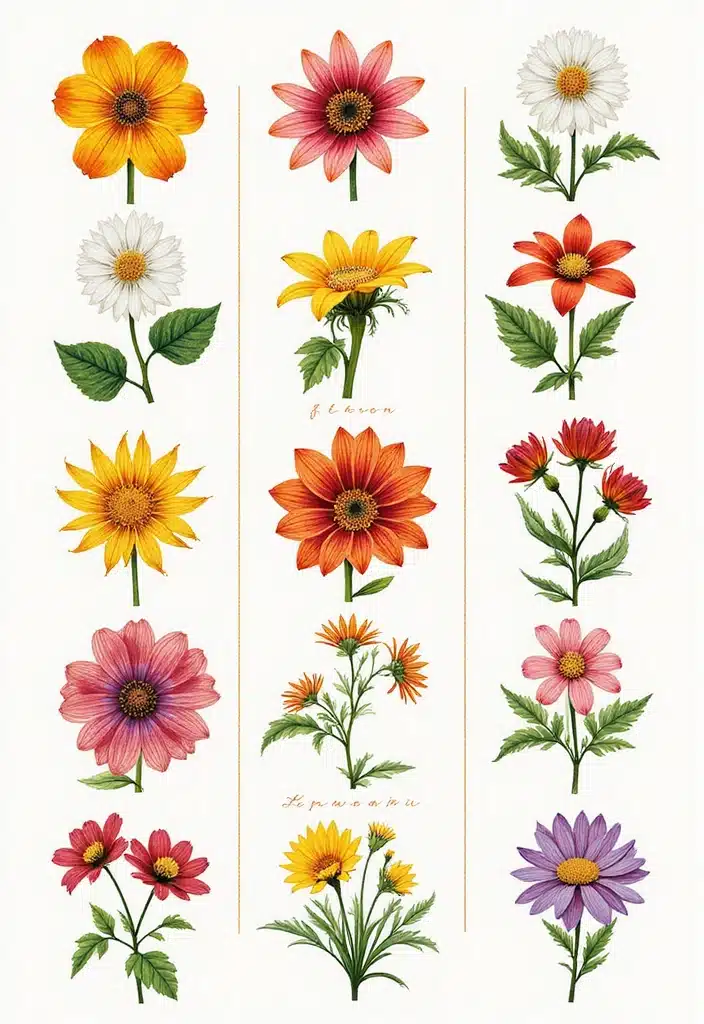
Rotating your seasonal flowers is a strategic way to maintain a vibrant garden. This practice helps manage soil nutrients, prevent disease, and reduce pests. By planting different flowers in the same spots each season, you allow the soil to regenerate. For instance, follow heavy feeders like sunflowers with lighter feeders such as snapdragons. A simple rotation plan can keep your garden healthy and full of life.
To ensure your soil is in top shape for these rotations, consider using a garden soil test kit. This tool will help you accurately measure soil pH and nutrient levels, allowing you to make informed decisions about which flowers to plant.
Consider this rotation strategy:
– Year 1: Heavy feeders (e.g. Sunflowers)
– Year 2: Medium feeders (e.g. Zinnias)
– Year 3: Light feeders (e.g. Cosmos)
To support your plants’ growth, an organic fertilizer like organic fertilizer for flowers can provide essential nutrients, ensuring that your garden stays vibrant throughout these rotations.
This not only keeps your soil balanced but also allows you to experiment with different flower combinations, keeping your garden fresh and exciting. To track your progress and ideas, a gardening journal can be an invaluable resource, helping you maintain notes on what works best in your seasonal rotations.
Conclusion
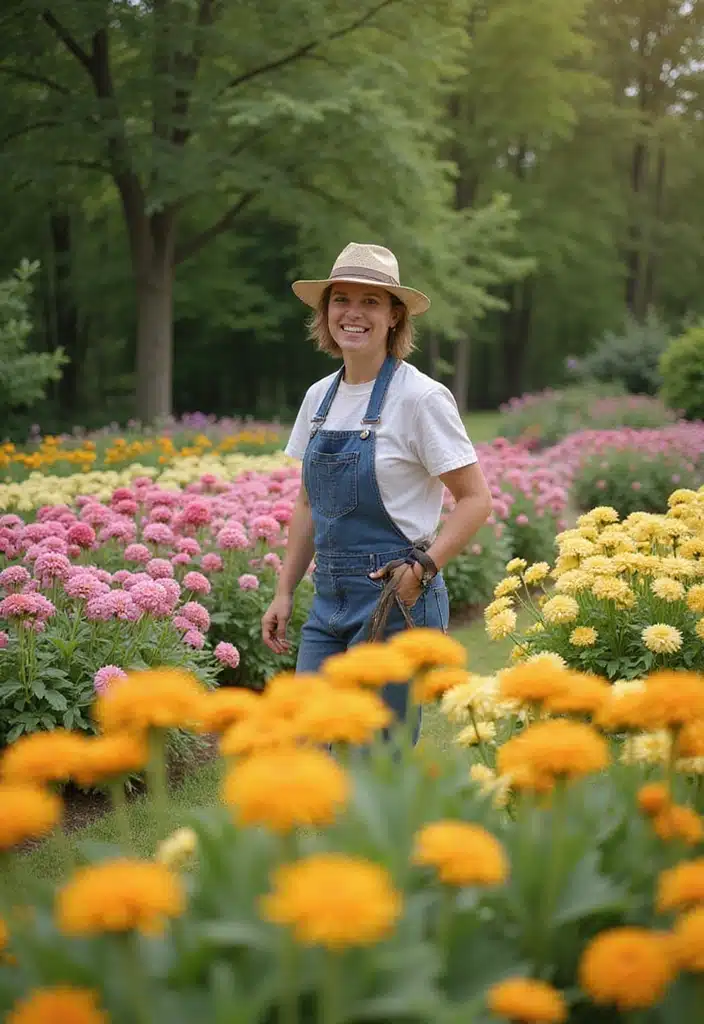
Embracing these planting secrets will elevate your gardening game to new heights!
With a little attention to detail and consideration for seasonal needs, your garden will be the talk of the neighborhood.
So grab your gloves and get planting—there’s a world of floral beauty waiting just outside your door!
Note: We aim to provide accurate product links, but some may occasionally expire or become unavailable. If this happens, please search directly on Amazon for the product or a suitable alternative.
This post contains Amazon affiliate links, meaning I may earn a small commission if you purchase through my links, at no extra cost to you.


